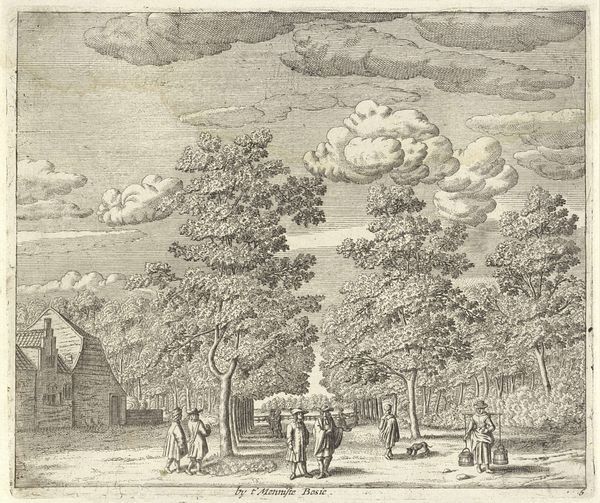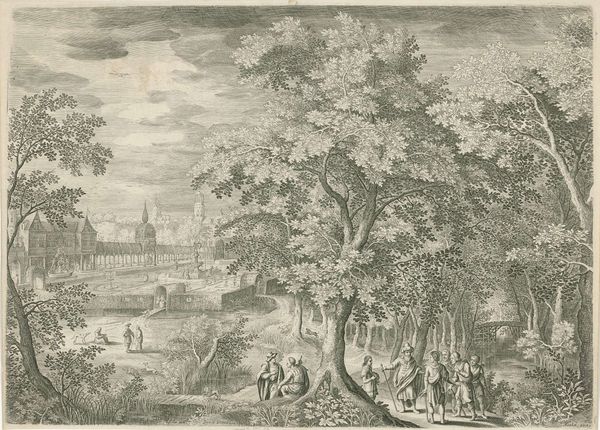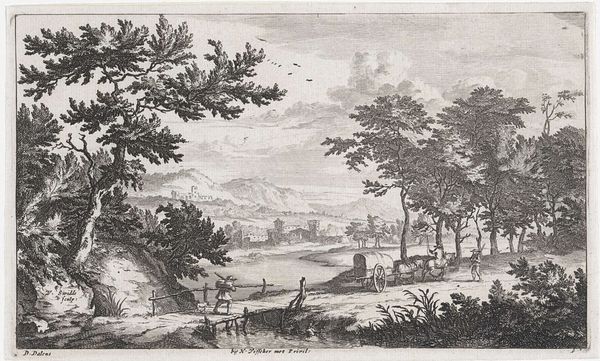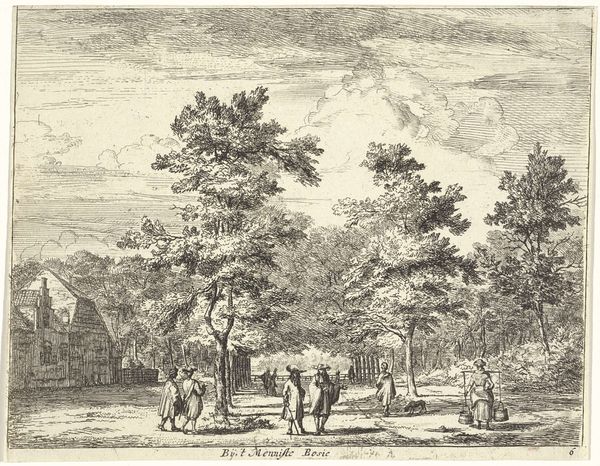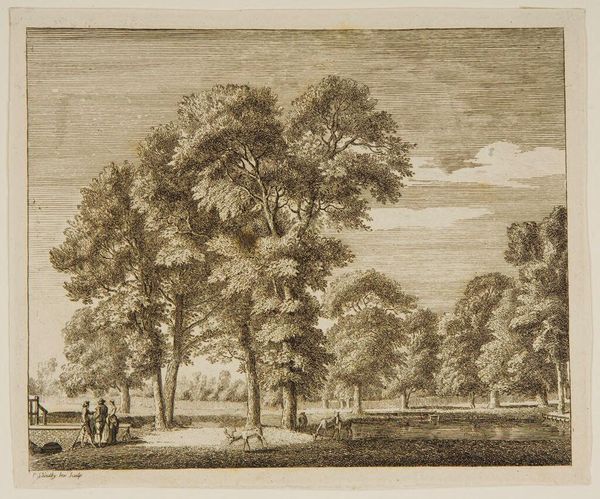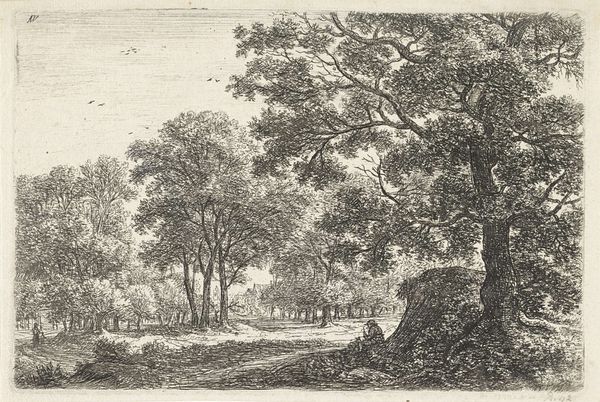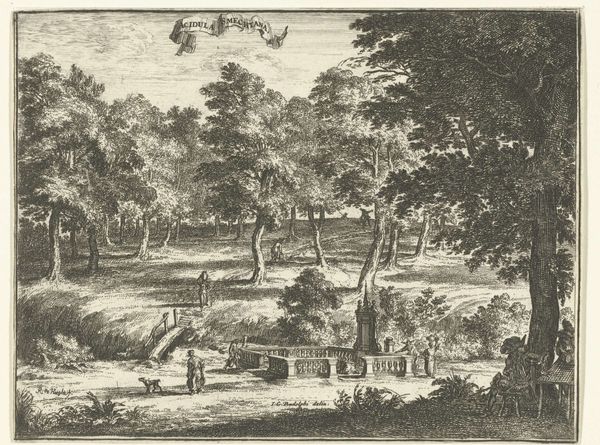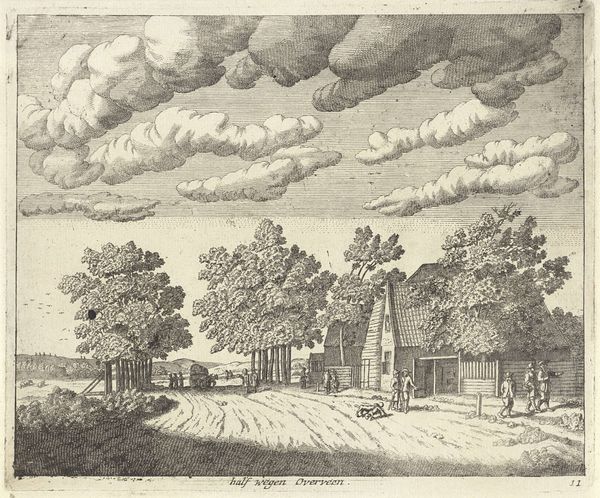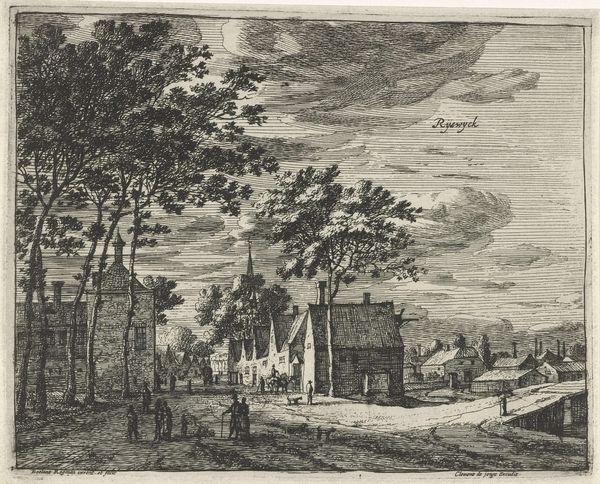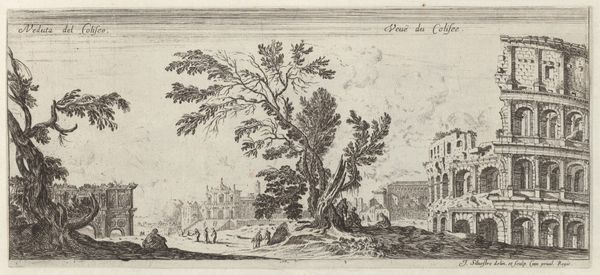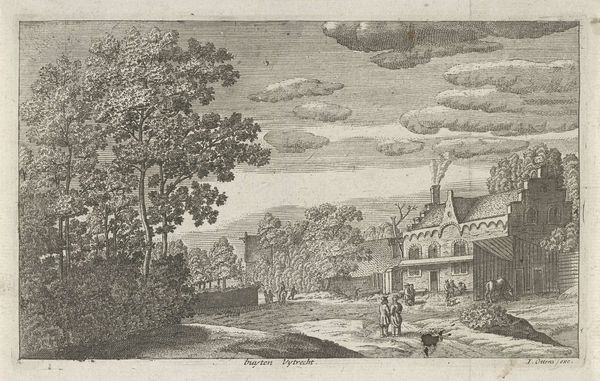
etching
#
baroque
#
etching
#
landscape
#
etching
#
line
#
cityscape
#
genre-painting
#
realism
Dimensions: height 147 mm, width 185 mm
Copyright: Rijks Museum: Open Domain
Curator: Let's turn our attention to this etching titled "Zittende figuren langs een bomenrij en huizen," dating back to 1690 by an anonymous artist. What's your first take? Editor: I’m struck by the granular texture. You can almost feel the artist carefully applying pressure to the plate to create these tiny marks. The contrast creates a bustling town square and relaxing woods at once. Curator: I find it intriguing how the anonymous artist captures the leisurely gathering in what appears to be a very gendered division of space and labour. The seated figures, perhaps predominantly women, contrast with the horseback riders in the background, possibly male figures engaging in trade or travel. How do you think that plays into the piece’s themes? Editor: Considering it’s an etching, there's a deliberate control over materials and how those translate to social commentary. Line by line, you get a landscape balanced between leisure and production; I am interested in who is being left out. What do these lines leave unsaid? Curator: Exactly. It makes one question the conditions in which such gatherings occur and who profits from their leisure. Considering that 1690 in the Netherlands was a period defined by mercantile pursuits and rising economic disparities, I wonder if this work hints at that social hierarchy, even subtly? Editor: And those are all very good questions considering the time of production for these printed items: how were they made, sold, distributed? If this print had a wide audience, what would be the social implications of representing scenes of relative prosperity? Is it aspirational or documenting the status quo? Curator: Thinking about the process, the mass production of such images made it a tool accessible to a larger public, making commentary much more far-reaching than painting, but what stories did that enable, and perhaps erase, simultaneously? Editor: That's right. The medium is always the message, especially with prints and considering the relationship between work and leisure, who it benefits, and how they are rendered visually, tells a great deal. Curator: Thank you for that insight; the implications are richer than one might immediately notice. Editor: Always glad to shed some light, especially considering labor!
Comments
No comments
Be the first to comment and join the conversation on the ultimate creative platform.

